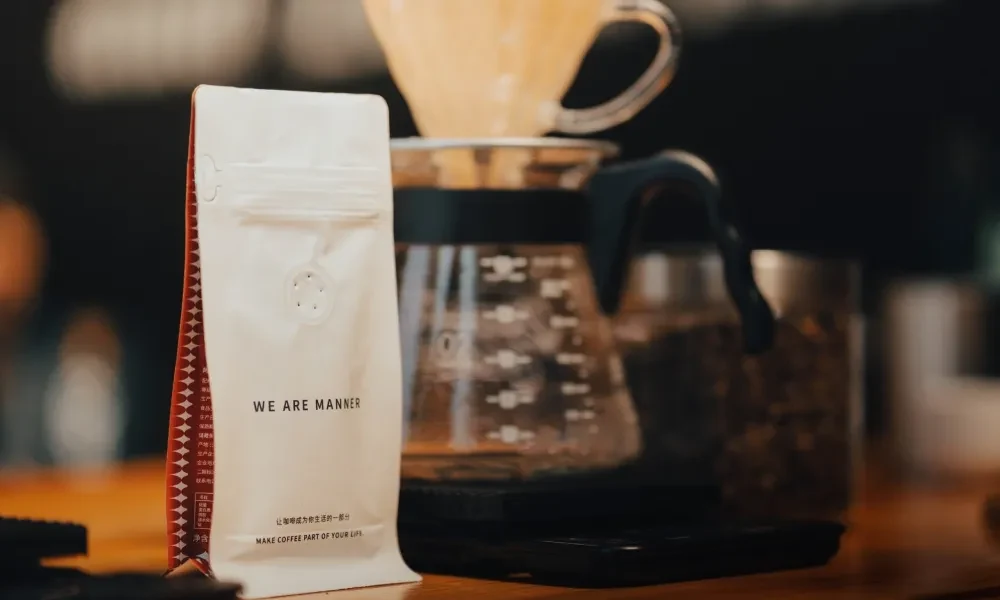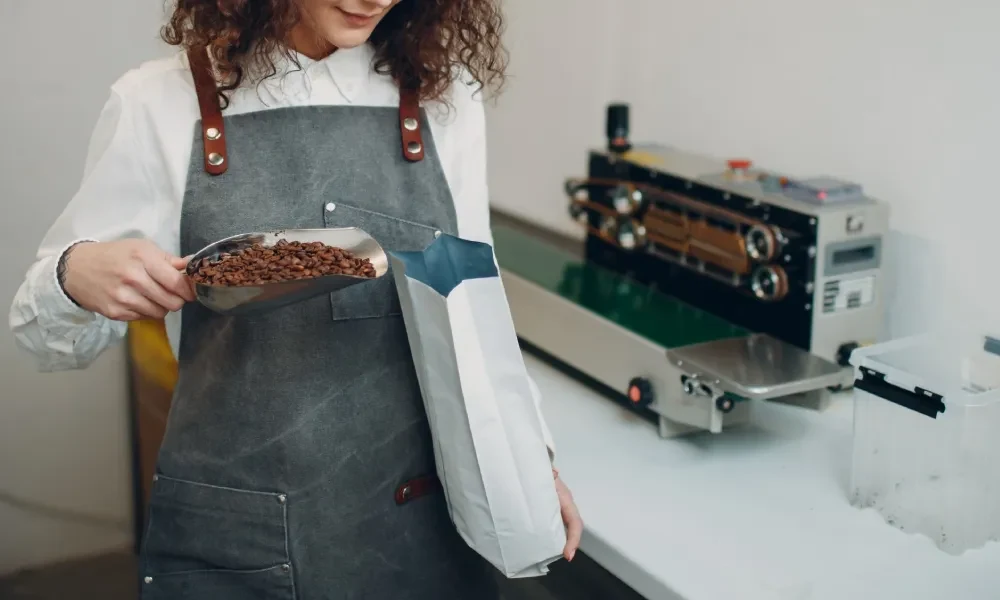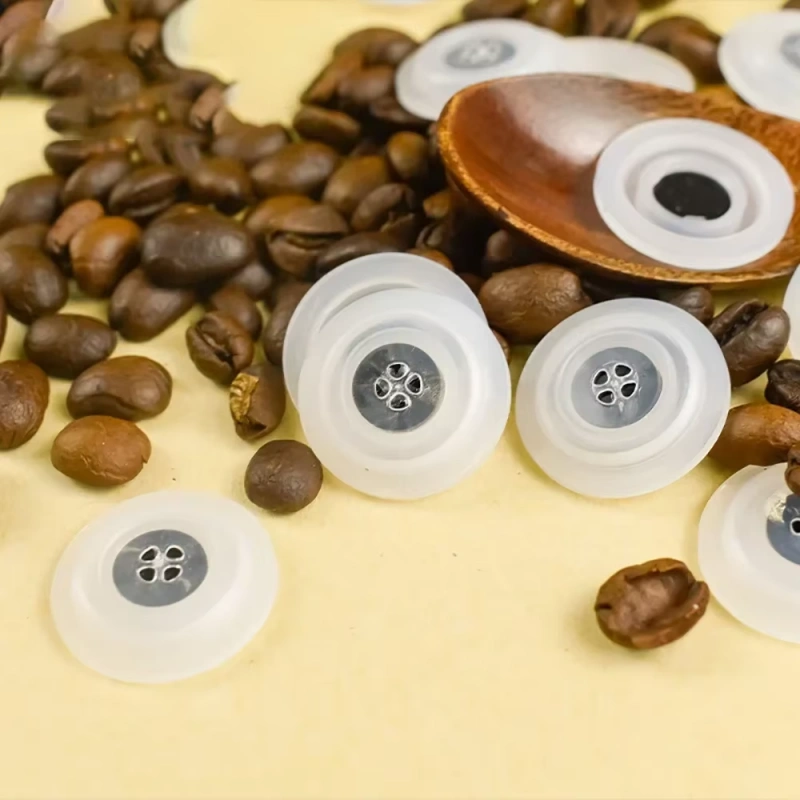A degassing valve is essential for preserving the freshness of coffee by allowing gases produced during roasting to escape while preventing air from entering. This process ensures that your coffee stays aromatic and flavorful for longer periods. Whether you’re a coffee roaster or distributor, incorporating a degassing valve into your packaging is a must.
Quote coffee bags with valve , explore top-quality options from BN Pack today!
What Is Degassing?
During the roasting process, various chemical reactions occur, including the production of CO2 and other volatile gases within the coffee beans. After roasting, the built-up CO2 begins to gradually escape, with up to 40% released in the first 24 hours.
The beans typically take between two and 12 days to reach the optimal CO2 level, which enhances the coffee’s flavor. This timing depends on factors like roast profile and bean density.
Even after packaging—whether whole beans or ground—CO2 continues to be released. If the coffee is packaged in a bag without a degassing valve, or if the valve fails to function properly, the bag can swell and potentially burst due to the trapped gases.
What Is A Degassing Valve?

A degassing valve is a small, one-way valve attached to coffee bags, designed to release gases while preventing air from entering. Freshly roasted coffee beans naturally produce carbon dioxide (CO2) as a result of chemical reactions. The valve allows this CO2 to escape from the packaging without letting oxygen or moisture in, preserving the coffee’s freshness.
The science behind this process involves the fact that CO2 builds up inside the beans after roasting. As the beans cool, this gas is released, and the degassing valve helps to control the pressure inside the bag. If the gas isn’t allowed to escape, it can cause the packaging to balloon or rupture, affecting the quality of the coffee.
The Importance Of Degassing Valve For Coffee Packaging

Maintaining Coffee Freshness
Degassing valves are crucial for maintaining the freshness of coffee by allowing freshly roasted beans to release excess CO2. Without this valve, the gas would build up inside the bag, causing pressure that could degrade the coffee’s freshness. By releasing the gas safely, a degassing valve ensures that the coffee stays fresh for a longer period, preserving its quality.
Preventing the Buildup of Gases Inside the Bag
When coffee beans release CO2, the gas can create a dangerous buildup if trapped inside the packaging. This pressure can cause the bag to swell, potentially leading to leaks or ruptures. A degassing valve prevents this by providing a controlled release of gas, ensuring the bag remains intact while protecting both the packaging and the coffee from any unwanted effects.
Protecting the Flavor and Aroma of the Coffee Beans
As coffee beans age, their volatile compounds responsible for aroma and flavor start to dissipate. A degassing valve plays a key role in preserving these essential elements by controlling the gas release process. It prevents the beans from losing their rich flavor and aroma, ensuring that each cup of coffee retains its full, robust taste from the moment the bag is opened.
Types of Degassing Valve
Pressure-Sensitive Degassing Valves:
Pros: These valves are activated when internal pressure exceeds the external pressure. They effectively allow CO2 to escape while preventing oxygen from entering the bag. The main advantage is their ability to maintain freshness by controlling gas release.
Cons: They can be prone to malfunction if the pressure is inconsistent or if the valve is not properly installed, which may lead to compromised freshness.
Micro-Perforated Degassing Valves:
Pros: These valves feature tiny holes that allow gas to escape gradually over time. They provide a more controlled release of CO2, reducing the chances of overpressure in the bag. The benefit is consistent freshness preservation, especially for bags stored longer.
Cons: They may not be as effective in high-CO2 environments, where a stronger release mechanism is needed to avoid bag rupture.
Do You Need A Degassing Valve On Your Coffee Bag?
Oxidation and Freshness
Like wine, freshly roasted coffee loses its flavor when exposed to oxygen. This process, known as oxidation, accelerates the staling of the coffee, dulling its vibrant aroma and taste. A degassing valve helps mitigate this by allowing CO2 to escape while preventing oxygen from entering the bag, effectively preserving the coffee’s freshness and ensuring the coffee reaches consumers with its full flavor intact.
When Degassing Valves Aren’t Necessary
A degassing valve may not be essential in cases where the coffee will be consumed relatively quickly, typically within a few days. Smaller pouches of coffee, for instance, can be consumed fast enough that the oxygen won’t have enough time to negatively affect the flavor.
Roasters have the flexibility to decide based on their market demand whether they need to include a degassing valve, offering a customized approach to packaging.
Flexibility for Wholesale Roasters
Wholesale coffee roasters benefit from the ability to add degassing valves on a case-by-case basis. Since the time between roasting and consumption can vary greatly depending on the customer, this flexibility is crucial.
Some roasters prefer to send out coffee without valves for shorter shelf lives, while others choose to use valves for bags that will sit on shelves longer, ensuring the coffee remains fresh until it is consumed.
Homebrewers Benefit
Degassing valves are also highly beneficial for homebrewers who want to store their coffee for extended periods. When coffee bags with high-barrier material and degassing valves are opened, the bag expels any oxygen inside, preserving the beans’ freshness.
This system helps homebrewers keep their coffee fresher longer, something that typical jars or containers cannot achieve, as they lack the ability to expel gases effectively.
Transportation Considerations
When roasters ship coffee over long distances, particularly internationally, degassing valves play a critical role in preventing CO2 buildup inside the bags. Without the valve, this gas accumulation could cause the bags to puff up or even burst, damaging the coffee and the packaging.
Factors such as bag size, roast date, and expected shipping duration are key in determining whether a degassing valve is necessary for safe transportation and optimal freshness upon arrival.
How do degassing valve work?

Degassing valves were invented in the 1960s by the Italian company Goglio to address a significant challenge faced by coffee businesses: managing degassing, oxidation, and maintaining freshness.
Since then, the design of these valves has evolved, becoming more cost-effective and environmentally friendly. Modern degassing valves now integrate seamlessly into coffee bags and use 90% less plastic.
A typical degassing valve consists of several components: a cap, an elastic disc, a viscous layer, a polyethylene plate, and a paper filter. Inside the valve, a rubber diaphragm is surrounded by a viscous sealant liquid that helps maintain surface tension.
As CO2 is released from the coffee, pressure builds inside the bag. When this internal pressure exceeds the surface tension, the liquid displaces the diaphragm, allowing excess CO2 to escape. In simple terms, the valve opens only when the pressure inside the bag is greater than the pressure outside.
How Does The Roast Profile Affect the Degassing Process?
The time it takes for roasted coffee to release built-up gases primarily depends on the roast profile. Dark roasts, created by exposing beans to higher temperatures for longer periods, release gases much faster than light roasts.
This happens because the sugars in the beans have had more time to develop, and the coffee cracks twice instead of once, increasing the surface area through which CO2 can escape. As a result, dark roasts reach their ideal CO2 level quicker than lighter roasts, which are denser.
The roast profile is especially important if the coffee will remain sealed for several days or weeks, such as when stored on a café shelf or at home. Smaller amounts of coffee that are consumed quickly or degassed during roasting may not always need a degassing valve. However, coffee bags that spend extended time on shelves or in transit will certainly benefit from one.
At BN Pack, we offer both coffee packaging with and without degassing valves.
How sustainable are degassing valves?

Since degassing valves are often added to coffee bags, roasters must consider how these valves will be disposed of alongside the used packaging.
Bioplastics, made from renewable sources like maize, corn starch, and sugar cane, have become a popular alternative to petroleum-based plastics. They offer the same functionality as traditional plastics but with a significantly smaller environmental footprint.
Degassing valves made from bioplastics are now more accessible and cost-effective, providing roasters with a sustainable packaging solution. Recyclable degassing valves help conserve fossil fuels, reduce carbon footprints, and showcase a roaster’s dedication to sustainability.
These valves also make it easier for customers to dispose of coffee packaging correctly, minimizing confusion. When paired with recyclable or compostable materials like kraft paper with PLA laminate, these sustainable degassing valves contribute to creating fully sustainable coffee pouches.
Not only do sustainable packaging options appeal to new customers, but they also foster brand loyalty among existing customers, especially those prioritizing eco-friendly practices. This can deter them from switching to more sustainable competitors.
At BN Pack, we offer the option to incorporate fully recyclable, BPA-free degassing valves into our coffee bags. These versatile, lightweight, and affordable valves can be added to all our sustainable coffee packaging choices, including materials like kraft paper, rice paper, and multilayer LDPE packaging with eco-friendly PLA linings.
Roasters have complete control over the design process, enabling them to create custom coffee bags that reflect their brand identity. Our design team is ready to assist, and we offer custom printing with a rapid 40-hour turnaround and 24-hour shipping.
BN Pack also supports micro-roasters with low minimum order quantities (MOQs), ensuring flexibility while highlighting their environmental commitment.
Conclusion
In conclusion, a degassing valve plays a crucial role in preserving the freshness and quality of roasted coffee by allowing CO2 to escape while preventing air from entering. This simple yet effective addition to coffee bags ensures optimal taste and shelf life.
If you’re looking for reliable, high-quality degassing valves for your coffee packaging, contact BN Pack today for a custom quote. Let us help you enhance your packaging with our sustainable and efficient solutions.
FAQ
What is the difference between a degassing valve and an air release valve?
A degassing valve and an air release valve both regulate pressure within sealed packaging, but they serve different purposes. A degassing valve allows the release of excess CO2 generated from freshly roasted coffee, preventing pressure buildup and ensuring the bag doesn’t burst. In contrast, an air release valve expels air from the packaging to prevent oxygen from entering but doesn’t address the specific release of CO2. While both valves help preserve product freshness, degassing valves specifically target gas buildup from roasted coffee.
What is the purpose of a degassing valve in coffee foil-lined bags?
The primary purpose of a degassing valve in coffee foil-lined bags is to allow the release of CO2 from freshly roasted coffee beans while maintaining the bag’s sealed integrity. Coffee beans emit CO2 as they off-gas after roasting. If the gas is trapped inside the bag, it can cause the bag to burst. The degassing valve effectively releases this CO2 without allowing external air or oxygen to enter, thus preventing spoilage and preserving the coffee’s flavor.
How long does it take to degas?
The time it takes for coffee beans to degas depends on the roast level and the type of coffee. Typically, freshly roasted coffee beans begin to release CO2 immediately after roasting, and the process can continue for several days to a couple of weeks. A dark roast generally releases gases more quickly than a light roast, as the beans have undergone more chemical reactions. Typically, beans start to stabilize after 5–7 days, with some gases still releasing up to two weeks or longer.
What is a one-way degassing valve?
A one-way degassing valve is a type of valve used in coffee packaging that allows gas (specifically CO2) to escape from the bag but prevents air from entering. This valve is essential for coffee bags since freshly roasted beans release CO2, which, if trapped, could cause the bag to burst. The one-way valve ensures the bag stays sealed while releasing the buildup of gas, keeping the coffee fresh without introducing oxygen that would lead to oxidation and flavor degradation.
How does a degassing column work?
A degassing column is a specialized system used for coffee processing that helps to expel excess CO2 from the beans after roasting. The column uses a controlled process where freshly roasted coffee beans are placed in a vertical container, allowing the gas to naturally escape through a venting system. The system works by allowing pressure to build up as CO2 is released, and then channels the gas out in a controlled manner. This process helps reduce the risk of over-carbonating beans, ensuring optimal flavor and freshness.
What is the best method of degassing?
The best method of degassing depends on the specific needs of the roaster and the scale of production. For smaller-scale roasting, allowing coffee to degas naturally in open containers for a few days can be effective. For larger-scale operations, using a degassing valve in packaging is a more practical and controlled approach. The valve ensures gas escapes while maintaining a sealed environment, preserving freshness. Additionally, proper storage conditions and controlling the air circulation around the coffee can aid in effective degassing.
